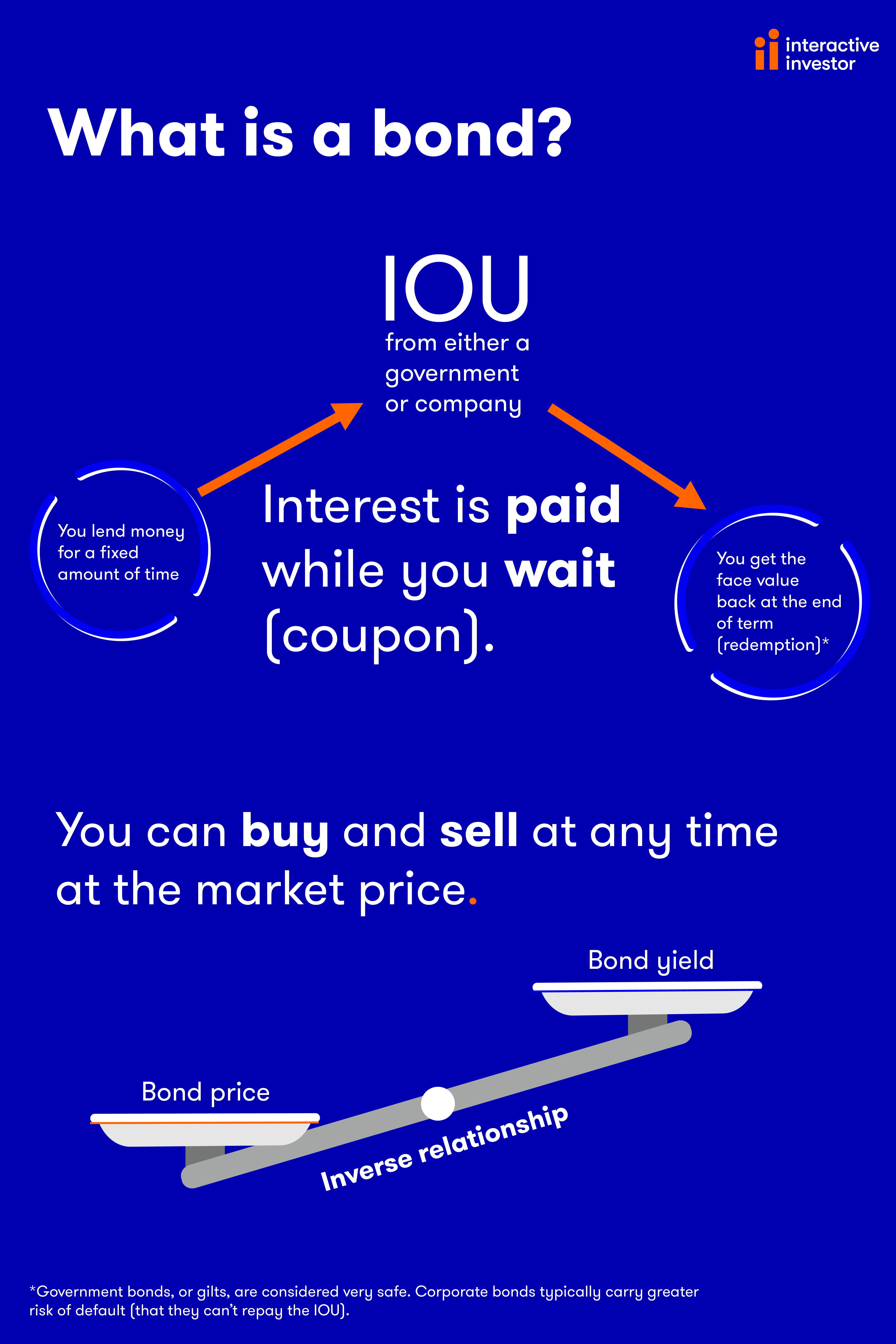Have claims of the death of the 60/40 portfolio been greatly exaggerated?
25th July 2022 12:32
by Kyle Caldwell from interactive investor
The portfolio idea of having 60% invested in shares and 40% in bonds may be reborn following the bond collapse this year. Kyle Caldwell explains why.

The 60/40 rule – having 60% invested in shares and 40% in bonds – is widely viewed as a simple and effective way of gaining adequate diversification to smooth out the peaks and troughs that are par for the course of investing in the stock market.
The theory is that while shares offer the prospect of higher returns, boring bonds provide the defensive ballast that’s required to ensure a hangover is averted when stock markets go through tough periods.
It is a strategy that’s been successful in the past. Data from Schroders, the fund manager, found that from the end of 1988 to 31 March 2019, a 60/40 split (MSCI Total Return Index and 10-year US Treasury Bond) would have delivered an annual return of 7.5%. In contrast, an 100% allocation to shares and 100% to bonds produced respective yearly returns of 7.2% and 6.2%.
- Reasons why the bear market is far from over
- Why these defensive investments will continue to deliver
- Investors ignore strong returns and dump British stocks for US rivals
The Vanguard LifeStrategy 60% Equity fund invests in this manner, aiming to strike a balance between capturing returns when stock markets rise, and limiting losses during periods of weakness. It is an approach that’s lived up to its billing. Since launch (in June 2011), the fund, which invests in other Vanguard index funds, has to 20 July 2022 returned 113.3% versus 83% for the Investment Association’s (IA) Mixed Investment 40%-85% Shares sector.
The fund, which is a member of interactive investor’s Super 60 list and also part of the Quick-start Funds range for beginner investors, has amassed a big following. It is the most popular of Vanguard’s five LifeStrategy funds, with assets of £12.7 billion. The other four Vanguard funds hold 20%, 40%, 80% and 100% in shares, with the balance invested in bonds.
So far in 2022, however, the strategy has seen its impressive risk-adjusted returns since launch come under pressure. Figures from FE Fundinfo show that the fund has lost 8.8% year-to-date. Yet this is better than the average fund in the sector, which is down 9.4%.
In addition, the five funds in the range have not performed in line with their level of risk in 2022.
Vanguard LifeStrategy 100% Equity is the riskiest, and the 20% version the safest, as it has the lowest exposure to equities. Therefore, it is to be expected that over the long term (a period of, say, five years) the 100% version would produce the highest return, followed by the 80% version, 60% version, 40% version, and 20% version. As the table below shows, over five years this has played out perfectly.
However, when markets are volatile, the opposite should happen, and the 20% version would be expected to best protect capital, followed by the 40%, 60%, 80% and 100% options. However, as the table below shows, this has not happened year-to-date and a larger ratio to bonds has dented returns.
How the five Vanguard LifeStrategy funds have fared
| Fund | Five-year performance (%) | Year-to-date in 2022 (%) |
|---|---|---|
| Vanguard LifeStrategy 100% Equity | 43.5 | -6.1 |
| Vanguard LifeStrategy 80% Equity | 33.7 | -7.5 |
| Vanguard LifeStrategy 60% Equity | 24.2 | -8.8 |
| Vanguard LifeStrategy 40% Equity | 15 | -10.2 |
| Vanguard LifeStrategy 20% Equity | 7.1 | -11.5 |
Data to 20 July 2022. Source: FE Fundinfo. Past performance is not a guide to future performance.
Why the 60/40 model has not worked so far this year
Both shares and bonds have unusually fallen in tandem so far in 2022, which has negatively impacted the 60/40 strategy. It has led some commentators to argue that the strategy is outdated and no longer fit for purpose. Central to concerns is that the market backdrop has now changed – inflation is red-hot and interest rates are climbing for the first time in a long time.
High inflation and increases in interest rates are challenging for both equities and bonds, but particularly bonds. Bonds pay a fixed income, which becomes less valuable when inflation rises. At the same time, bonds become less attractive when interest rates rise as there’s greater competition from cash returns and better deals available from newly issued bonds.
As there’s less of an incentive to buy bonds, this results in bond prices falling and yields rising. Bond prices and bond yields have an inverse relationship.
When interest rates are cut, the opposite plays out and bond yields fall and bond prices rise.
- Why bonds are at a major turning point, according to veteran investors
- Why bonds are back as a diversifier despite rate rises
- Why bonds are back after a record-breaking sell-off
With bonds under the cosh, it raises the questions of whether alternative assets (such as property and infrastructure) could be added to the mix to provide additional diversification. Like bonds, both property and infrastructure have historically had little correlation with the stock market.
Although, it is worth pointing out that alternative assets can show close correlation to equities if they are held in a listed form (listed property securities, for instance). Such assets can also be relatively illiquid.
But before considering switching to a less catchy 60/30/10 or 50/30/20 split, with the latter containing alternatives, it is worth assessing why bonds have, so far this year, not fulfilled their role as a defensive buffer, and whether going forward things could change.
60/40 strategy could be reborn following bond market sell-off
For the past couple of years, bond yields have been at historically low levels, pushed down over the past decade by central bankers’ quantitative easing bond-buying programmes, which have now ended. In response to interest rate rises, bond yields have moved higher, causing the price of bonds to fall.
However, with bond yields now becoming much more attractive for income-hungry investors, the bond market storm may ease in the coming months. The income from bonds is now respectable in its own right; corporate bonds are yielding between 3% and 5%, US treasuries about 3%, and 10-year government bonds around 2%.
If investors are attracted to these higher yields and return to bonds, then the asset class will, in theory, once again be less volatile than shares.
In the short term, everything hinges on inflation. On the one hand, the bond market sell-off could have gone too far, with investors pricing in too much inflation and too many interest rate hikes.
The big risk, however, is that inflation does not cool. If it persists, then central bankers will continue to raise interest rates, which does not bode well for bonds. In addition, further rate rises, particularly if central bankers are too aggressive, could tip the global economy into a recession.
This would also be bad news for equities. Therefore, if inflation remains high, the risk is that bonds and equities will continue to fall together.
There are, however, reasons for optimism when looking at the longer-term picture. As previously explained, if central banks are now willing to raise interest rates following more than a decade of stubbornly low borrowing costs, then cycles of rising and falling interest rates (such as if a recession materialises) could return. If this plays out, stock and bond markets will return to performing differently from one another.
For example, if a recession occurs and central bankers react by cutting interest rates, bond prices would be expected to rise, and yields to fall. Rising bond prices would cushion the impact of falling equity markets.
Therefore, the 60/40 portfolio could continue to serve investors well.

The view of Vanguard LifeStrategy 60% Equity fund
Mohneet Dhir, a product specialist for the Vanguard LifeStrategy fund range, argues that going forward the 60/40 mix of shares and bonds will be more important than it has been historically.
In a recent video interview with interactive investor, Dhir said: “The next 10, 20 years, are going to be different from what we've seen in the last 10 to 20 years. Especially in the next 10 years, we're likely to see more uncertainty.
“Since the global financial recession, we've had a record amount of stimulus from central banks, and that's changing now. And what that means is more uncertainty in the market.
“Also we're recovering post-Covid as a world globally. We've also got the highest geopolitical tensions that we've had in a long time.
“So all these factors combined actually indicates the need for bonds being even higher going forwards than they have been in the past. And especially in a multi-asset portfolio.
“The role of bonds is extremely important going forward because we always ask investors to think about bonds as the defensive element in their multi-asset portfolios because their role is to make sure that they can buffer off the volatility that equities bring into a multi asset portfolio.”
- Watch our video on Vanguard LifeStrategy funds: everything you need to know
- Watch our video on Vanguard LifeStrategy: the outlook for the next decade
When asked in the interview about the possibility of alternative assets being added to the Vanguard LifeStrategy range, Dhir said: “When we introduced the LifeStrategy funds, the research we did prior to that showed that the equity/bond mix actually works really well over different market cycles without the need to add alternatives such as property, commodities, etc.
“We are continuously looking at this and our research team, the investment strategy group that works in Vanguard, is responsible for looking at different market dynamics, behaviours, correlations, etc. Our research doesn't show at this point in time that we need to add anything else to the LifeStrategy [funds].”
These articles are provided for information purposes only. Occasionally, an opinion about whether to buy or sell a specific investment may be provided by third parties. The content is not intended to be a personal recommendation to buy or sell any financial instrument or product, or to adopt any investment strategy as it is not provided based on an assessment of your investing knowledge and experience, your financial situation or your investment objectives. The value of your investments, and the income derived from them, may go down as well as up. You may not get back all the money that you invest. The investments referred to in this article may not be suitable for all investors, and if in doubt, an investor should seek advice from a qualified investment adviser.
Full performance can be found on the company or index summary page on the interactive investor website. Simply click on the company's or index name highlighted in the article.